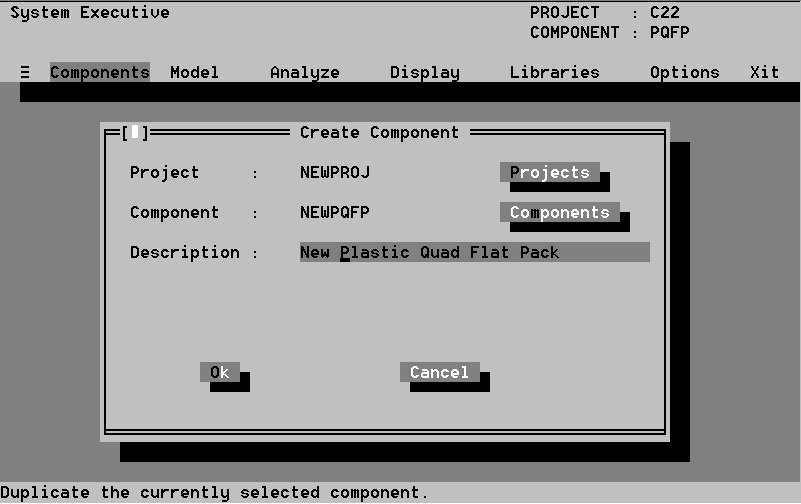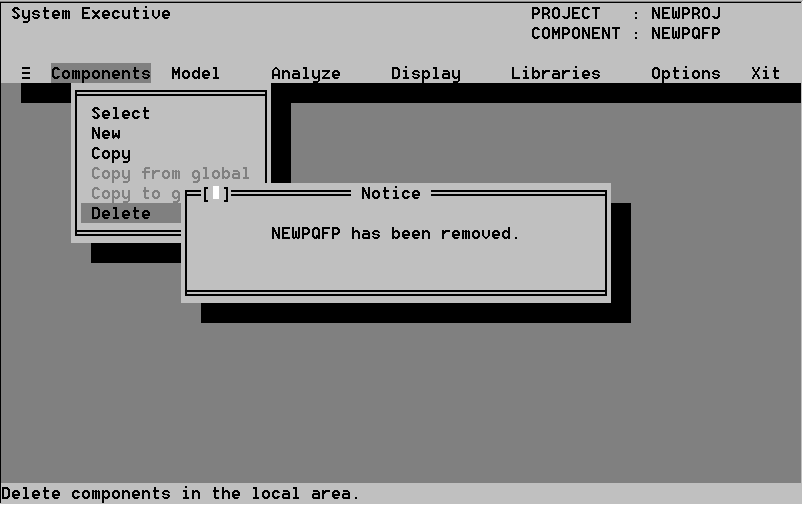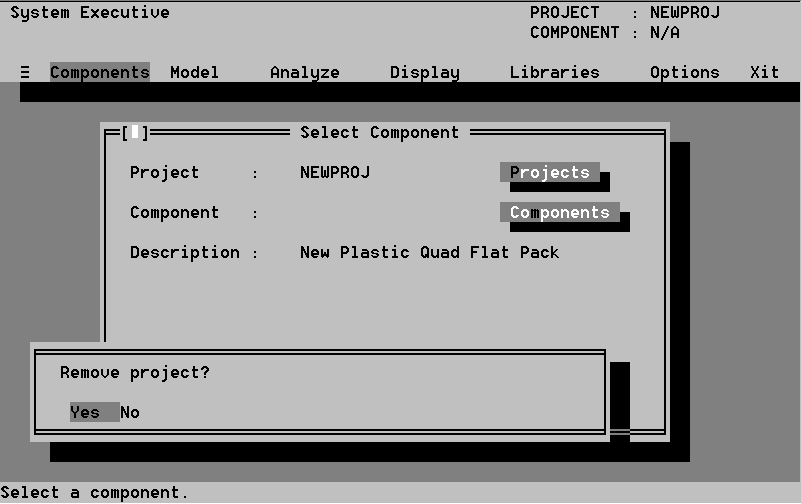- Select enables you to activate a project and/or component.
- New enables you to create a project and/or component.
- Copy enables you to copy and rename a project.
- Copy from enables you to copy components from the global directory to your personal directory.
- Copy to enables you to copy components from your directory to the global directory.
- Delete enables you to delete a component.
- Selecting a command displays the Select Components window in Figure 2.
- Select the Select command from the Components menu. The Select Components window appears (see Figure 2). The active project name appears in the Project field.
- To change projects, select the Projects button. A list of projects appears. If you just want to change components, select the Components field and skip Step 3.
- Select the project you want to activate and press Enter. The project name appears in the Project field and the blue highlighter moves to the Component field. The component associated with the previously active project appears in the Component field. You must activate a component from the currently active project or an error message appears.
- Select the Components button. A list of components associated with the project appears.
- Select the component you want and press Enter. The component name appears in the Component field. If you want to use a component not in the components list, you must use the New command discussed in the next section to add it to the list first.
- Select the Ok button to accept, Cancel to cancel. Either returns you to the System Executive. If you accept, the project name and component name appear at the upper right of the top-level menu.
- Select the New command from the Components menu. The Create Component window in Figure 4 appears (its fields will be blank). The Projects field is highlighted and displays the active project name. Press Esc or select the Cancel hot key at any time to cancel New.
- If you are creating a new project, type a name for the project and press Enter. The highlighter bar moves to the Component field.
- The Component field is highlighted. Type a name for the component you will design and press Enter. It doesn't matter if the component exists in another project. It won't appear if you select the Component button at this point. Neither will its design replace any other designs in any other projects.
- The highlighter moves to the Description field. Type something that indicates the purpose of the project and press Enter. The highlighter moves to the Type field.
- You may not change the remaining fields.
- Select the Ok button to confirm, Cancel to cancel. If you select Ok, a window appears asking to confirm.
- Select Yes to confirm, No to cancel. If you confirm, the project becomes active and you return to the System Executive. If you cancel, a window appears informing you the component was not created. You remain in the Create Component window. Select the Cancel button to cancel and return to the System Executive.
- Choose the project by choosing Select from the components menu which will cause the Select Component windows to appear.
- Choose Projects and then click on the project of interest from the selections to activate this project. Then select the Component field.
Use Components to activate or create projects before using CADMP-II options. The Components menu contains six commands (see Figure 1).
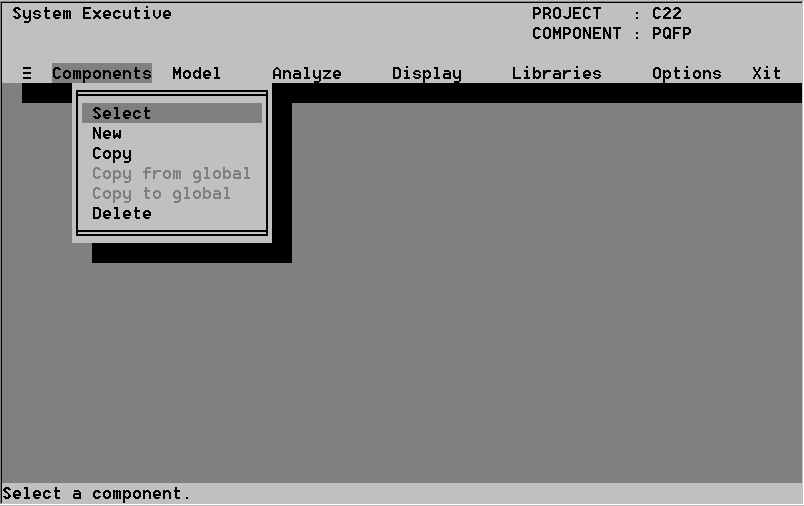
5.1 The Select Command
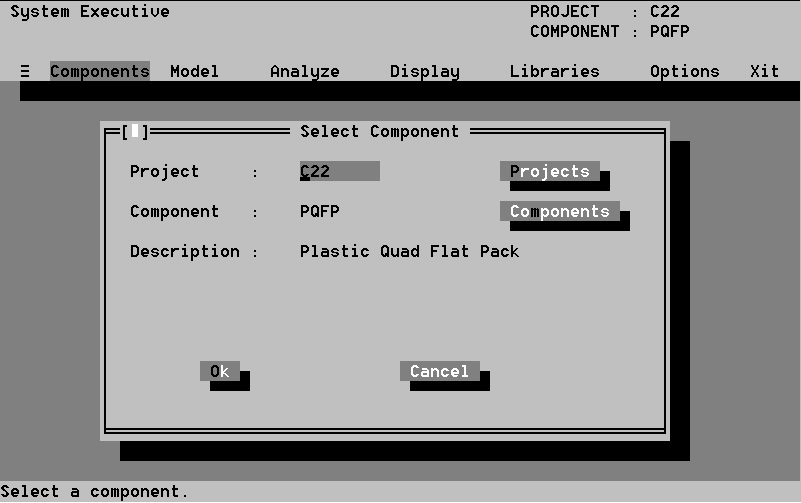
Projects are jobs or systems. Components are the individual components that you design as separate entities. For example, in Figure 3, "C22" is a unit that will be modeled. "PQFP" is the name of the component you will design to meet the requirements of the "C22" unit. Note the blue rectangle in the upper right corner exits the window when selected with the mouse.
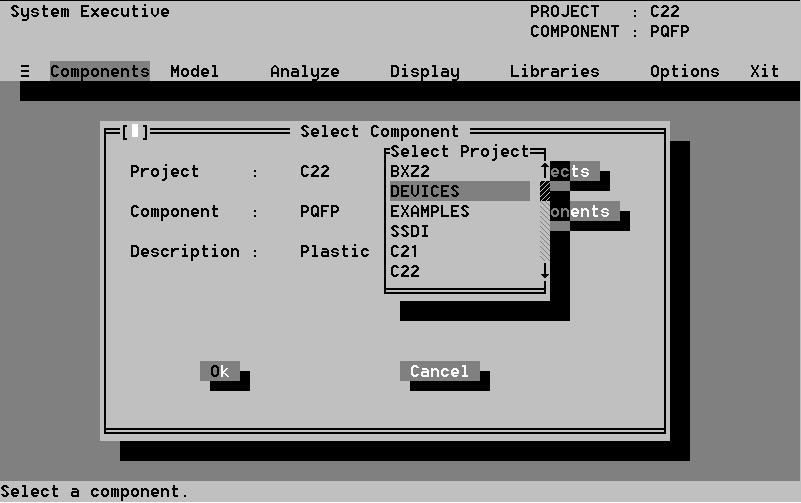
If you are creating a new project:
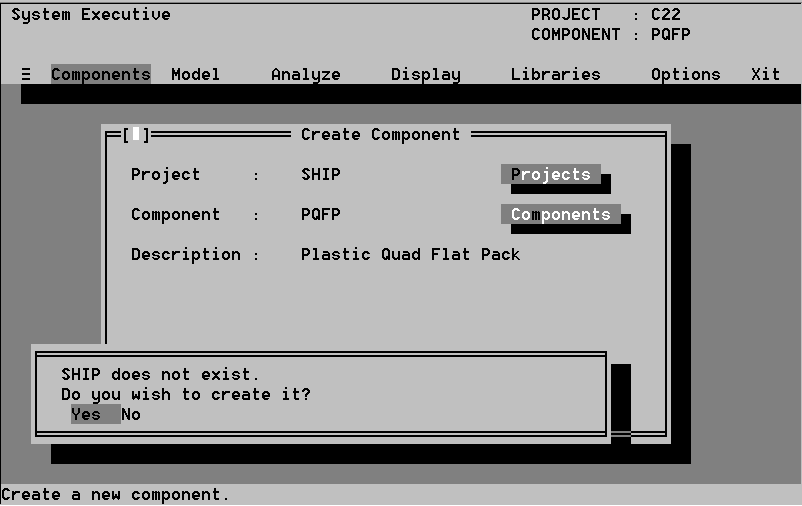
Error messages appear if you attempt
to confirm creation before completing the Project and Component fields.
Press Esc to return to the window and complete the fields.
